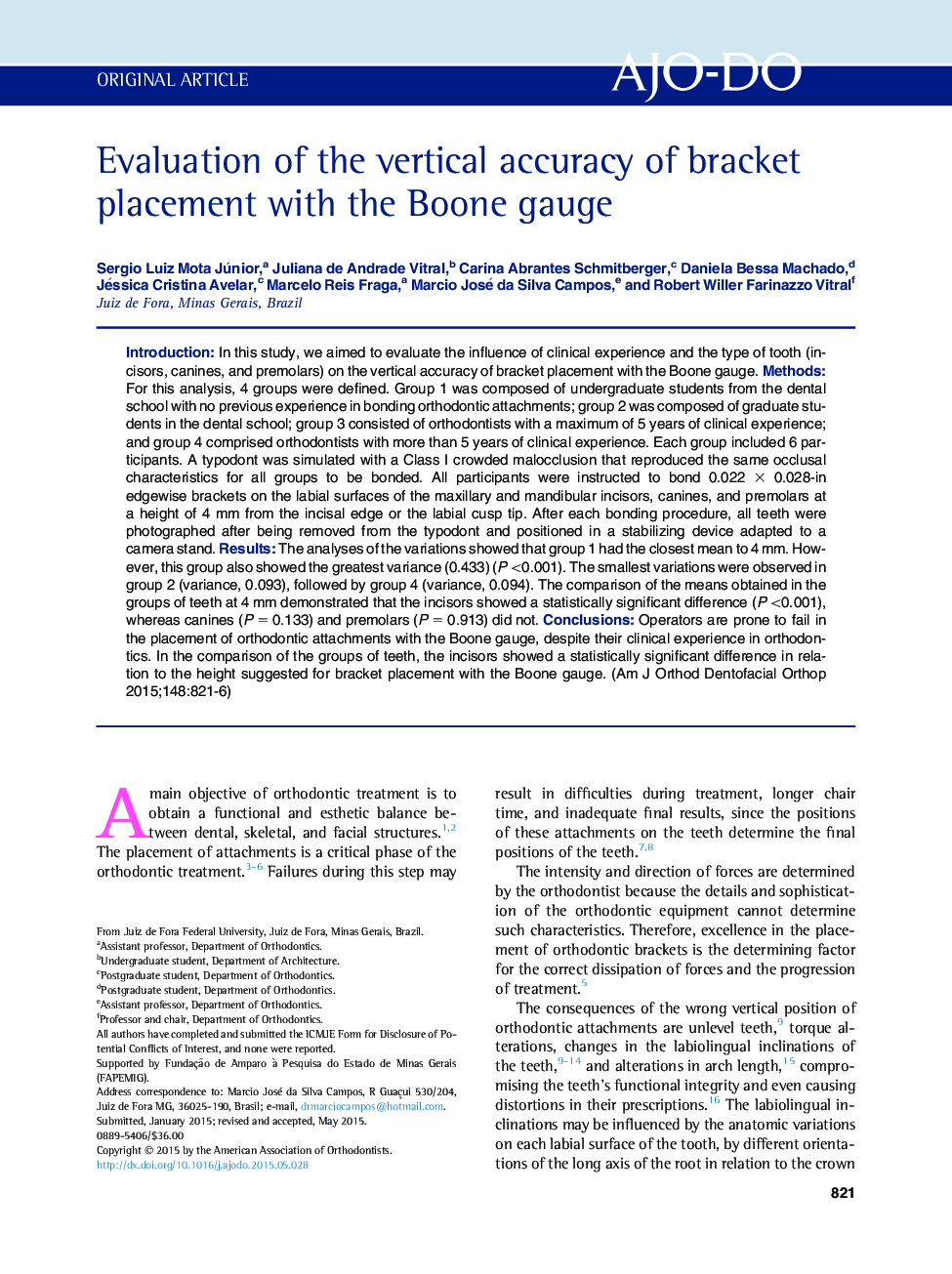| Article ID | Journal | Published Year | Pages | File Type |
|---|---|---|---|---|
| 3115802 | American Journal of Orthodontics and Dentofacial Orthopedics | 2015 | 6 Pages |
•Incisors are related to higher bracket placement errors in orthodontics.•Bracket placement failures with a Boone gauge are not related to operator experience.•Free gingival-occlusal inclination disposes a positioning gauge to placement error.
IntroductionIn this study, we aimed to evaluate the influence of clinical experience and the type of tooth (incisors, canines, and premolars) on the vertical accuracy of bracket placement with the Boone gauge.MethodsFor this analysis, 4 groups were defined. Group 1 was composed of undergraduate students from the dental school with no previous experience in bonding orthodontic attachments; group 2 was composed of graduate students in the dental school; group 3 consisted of orthodontists with a maximum of 5 years of clinical experience; and group 4 comprised orthodontists with more than 5 years of clinical experience. Each group included 6 participants. A typodont was simulated with a Class I crowded malocclusion that reproduced the same occlusal characteristics for all groups to be bonded. All participants were instructed to bond 0.022 × 0.028-in edgewise brackets on the labial surfaces of the maxillary and mandibular incisors, canines, and premolars at a height of 4 mm from the incisal edge or the labial cusp tip. After each bonding procedure, all teeth were photographed after being removed from the typodont and positioned in a stabilizing device adapted to a camera stand.ResultsThe analyses of the variations showed that group 1 had the closest mean to 4 mm. However, this group also showed the greatest variance (0.433) (P <0.001). The smallest variations were observed in group 2 (variance, 0.093), followed by group 4 (variance, 0.094). The comparison of the means obtained in the groups of teeth at 4 mm demonstrated that the incisors showed a statistically significant difference (P <0.001), whereas canines (P = 0.133) and premolars (P = 0.913) did not.ConclusionsOperators are prone to fail in the placement of orthodontic attachments with the Boone gauge, despite their clinical experience in orthodontics. In the comparison of the groups of teeth, the incisors showed a statistically significant difference in relation to the height suggested for bracket placement with the Boone gauge.
